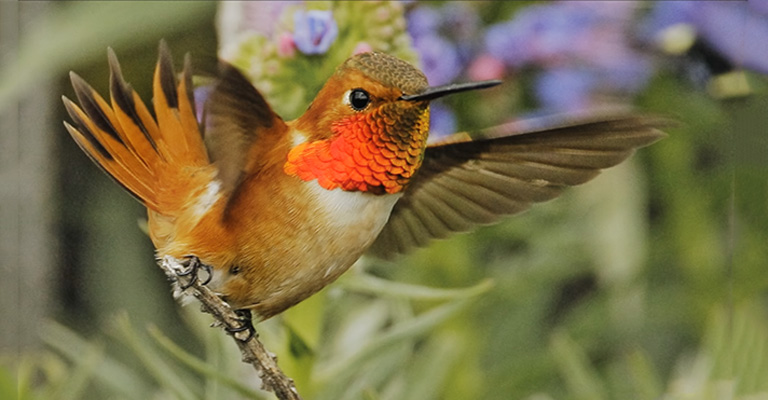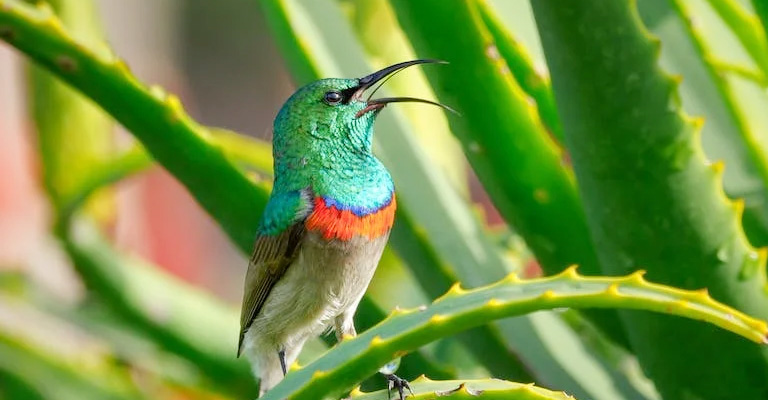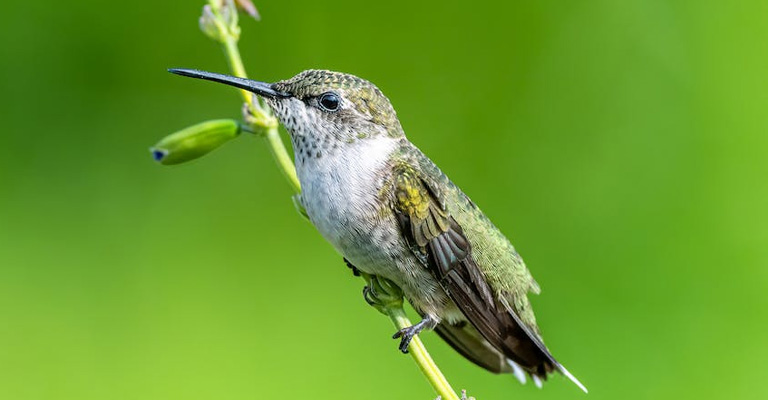The world of hummingbirds is a realm of astonishing feats, from their remarkable flight agility to their captivating vocalizations.
Among their many enchanting behaviors, the way hummingbirds dive and the resulting whistling sounds they produce stand as a testament to their extraordinary adaptations.
Hummingbirds’ dive maneuvers are a display of their aerial mastery, showcasing their ability to navigate and perform intricate movements with astonishing precision.
The accompanying whistling sounds add an auditory dimension to their mesmerizing performances.
In this exploration, we delve into how do hummingbirds dive and What makes them whistle execute their dives and what makes them produce those distinctive whistling sounds, unraveling the intricacies behind these captivating behaviors.

How Do Hummingbirds Dive?
Hummingbirds are amazing birds that can dive at incredible speeds and angles. Here are some interesting ways hummingbirds dive:
Courtship
Male hummingbirds perform spectacular dives to impress and attract females. They fly up to a height of 30 meters (100 feet) and then plunge down at a steep angle, reaching speeds of up to 60 miles per hour (97 km/h).
They pull up at the last moment, creating a loud popping sound with their tail feathers.
Defense
Hummingbirds are territorial and aggressive birds that will dive at intruders or rivals that enter their feeding or nesting areas.
They will dive at other hummingbirds, larger birds, or even humans or animals that pose a threat to them. They will also make buzzing or chirping sounds to warn or intimidate their opponents.
Hunting
Hummingbirds feed on nectar from flowers and insects that they catch in flight or by diving into the water.
They have excellent vision and can spot their prey from a distance. They will dive at high speeds and use their long and pointed bills to snatch their prey. They will also use their tongues to lick their prey from their bills.
Fun
Hummingbirds are playful and curious birds that enjoy diving for fun or exploration. They will dive at different angles and directions, sometimes in groups or pairs, to test their skills and abilities.
They will also dive to investigate new objects or places, such as feeders, flowers, or fountains.
Escape
Hummingbirds are vulnerable and preyed upon by many predators, such as hawks, owls, snakes, cats, or spiders.
They will dive to escape or evade their predators, using their speed and agility to maneuver and dodge.
They will also use their colors and iridescence to confuse or dazzle their predators.
Migration
Hummingbirds migrate long distances across continents and oceans, sometimes flying over 1,000 miles without stopping.
They will dive to gain momentum and altitude, using the wind currents and thermals to assist them. They will also dive to avoid obstacles or hazards, such as storms, mountains, or predators.
Bathing
Hummingbirds need water not only for drinking but also for bathing and preening. They will dive into the water sources, such as birdbaths, fountains, misters, or drippers, to wet their feathers and clean themselves. They will also shake their bodies and fluff their feathers to dry themselves.
Cooling
Hummingbirds have a high body temperature and metabolism, which means they generate a lot of heat and need to cool down.
They will dive into the air or water to lower their body temperature and prevent overheating. They will also pant or spread their wings to dissipate heat.
Sleeping
Hummingbirds have the ability to go into a state of torpor, which is a deep sleep that lowers their body temperature and slows down their heart rate and breathing.
This helps them conserve energy and survive cold nights or food shortages. They will dive into a sheltered and safe place, such as a tree branch or a nest, to enter torpor.
What Makes Hummingbirds Whistle?

Hummingbirds are renowned not only for their vibrant colors and rapid flight but also for their distinctive whistling sounds.
These sounds are intriguing, and several factors contribute to why hummingbirds whistle:
Wingbeat Frequency
Hummingbirds have an incredibly rapid wingbeat, ranging from around 50 to 80 beats per second. The sound created by their wings cutting through the air generates the characteristic whistling noise.
Air Turbulence
As hummingbirds move their wings swiftly, they create turbulence in the air. This turbulence results in vibrations that produce the humming and whistling sounds that are often associated with these tiny birds.
Unique Anatomy
The structure of hummingbirds’ wings, along with their small size and rapid wing movement, amplifies the aerodynamic effects that lead to the whistling sounds.
Species Variation
Different hummingbird species produce varied whistling sounds due to variations in their wing morphology, wingbeat frequencies, and flight patterns.
Mating and Display
Male hummingbirds sometimes use their whistling sounds as part of their courtship displays to attract females. These vocalizations contribute to their overall visual and auditory mating rituals.
Territorial Communication
Whistling sounds can also serve as territorial signals, helping to establish and maintain boundaries between competing hummingbirds.
Alarm Calls
Some whistling sounds may indicate alarm or distress. These vocalizations can alert other nearby hummingbirds to potential threats, helping to ensure the safety of the group.
Communication in Flight
While in flight, hummingbirds might use whistling sounds to communicate with other members of their species, facilitating coordination during maneuvers or group movements.
Innate Behavior
Whistling sounds might be an innate feature of hummingbird flight, arising from the aerodynamic interactions between their wing morphology, speed, and the surrounding air.
The whistling sounds emitted by hummingbirds during flight are a result of the intricate interplay between their unique wing structure, rapid wingbeat frequency, and the aerodynamic effects they create.
These vocalizations serve multiple functions, from courtship displays and territorial communication to alarm calls and coordination during flight.
The whistling sounds add an extra layer of intrigue to these already captivating birds, highlighting the complexities of their behavior and physiology.
What Makes Them Produce Those Distinctive Whistling Sounds?

The distinctive whistling sounds produced by hummingbirds during their flights are a product of intricate aerodynamics and rapid wing movements.
Several factors contribute to the creation of these captivating sounds:
Wing Morphology
Hummingbirds possess unique wing structures designed for rapid and agile flight. Their elongated wings and the specific arrangement of feathers contribute to the creation of air turbulence as they move through the air.
Wingbeat Frequency
Hummingbirds have an incredibly high wingbeat frequency, ranging from 50 to 80 beats per second. This rapid wing movement increases the chances of encountering air turbulence that generates sound vibrations.
Air Resistance
As hummingbirds cut through the air with their swift wingbeats, they encounter resistance. This resistance creates small vortices and fluctuations in air pressure, generating vibrations that result in the whistling noise.
Feather Interaction
The interaction between their primary feathers and the air contributes to the creation of sound. The movement of these feathers through the air generates rapid changes in pressure, further enhancing the sound-producing effect.
Aerodynamic Maneuvers
When hummingbirds perform aerial maneuvers such as dives, their adjustments in wing angles and tail feather positions intensify air disturbances, leading to variations in the whistling tones.
Species Variability
Different hummingbird species might produce slightly different whistling sounds due to variations in wing morphology, flight patterns, and wingbeat frequencies. These nuances contribute to the distinct auditory signatures of each species.
The whistling sounds of hummingbirds are the result of their remarkable adaptations to flight and their ability to manipulate airflow.
As they cut through the air at remarkable speeds, their wing movements create a symphony of vibrations that resonate as the enchanting whistles we associate with these aerial wonders.
FAQ
Hummingbirds execute dives by altering their wing angles and adjusting their tail feathers.
These adjustments allow them to create controlled forward movements while maintaining stability during their rapid descents.
Hummingbird dives are often part of their courtship displays or territorial behaviors. These dives showcase their agility and help them establish dominance or attract potential mates.
Their exceptional visual acuity and rapid decision-making allow hummingbirds to navigate with precision. They rely on their keen senses to adjust their flight path and avoid obstacles while executing intricate dives.
The whistling sounds result from the interaction between their rapid wingbeats and the air turbulence created as they move through the air.
Their wings cut through the air swiftly, generating vibrations that create a distinct whistling noise.
Different species of hummingbirds might produce slightly varied whistling sounds due to differences in wing morphology, wingbeat frequencies, and flight patterns. Each species has its own unique auditory signature during dives.
Conclusion
The marvels of hummingbirds’ aerial prowess extend beyond their graceful hovering and rapid flight.
Their ability to execute dives with incredible accuracy and the resulting whistling sounds are fascinating phenomena that highlight their evolutionary adaptations.
By manipulating wing angles, feather structures, and air resistance, hummingbirds perform these complex maneuvers, showcasing both their agility and the laws of physics at play.
The whistling sounds that accompany these dives are a harmonious blend of aerodynamics and anatomy, further enriching our understanding of these avian wonders.
From the mesmerizing visual spectacle of their dives to the auditory allure of their whistles, hummingbirds continue to captivate and astound, revealing the beauty and complexity of the natural world.